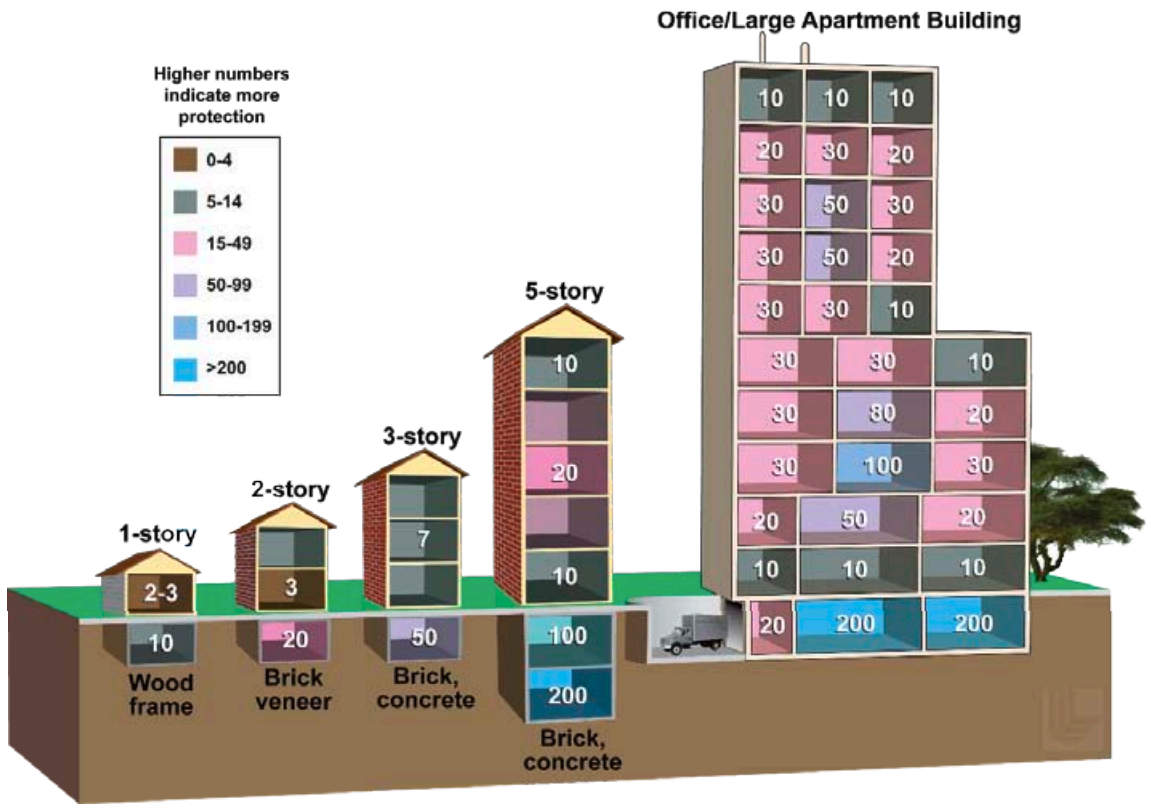The Doomsday Clock was created after the use of atomic bombs on Hiroshima and Nagasaki to bring about a swift end to the second World War. Developed by an international group of researchers called the Chicago Atomic Scientists, the clock is a symbolic measurement of how close we are to nuclear destruction.
The clock peaked at “two minutes before midnight” back in 1953, during the Cold War. More recently, the clock has been moved back to these Cold War era levels, with its tick to two and a half minute before midnight this January.
Now, tensions between North Korea and the United States are peaking, and while the clock has not moved, the rhetoric flying from Pyongyang and the White House is doing nothing to assuage fears of a nuclear showdown.
“WHIRLPOOL OF FIRE”
So, what can we expect from such a horrific possibility? Interviews conducted with survivors of the attacks in Japan give personal insight into exactly what happens to those unfortunate enough to witness a nuclear explosion.
The testimonies were collected by the Hiroshima Peace Cultural Center as a part of the “Voice of Hibakusha” project.
Akiko Takakura was 20 years old when the bomb dropped on Hiroshima. He was only 300 feet from the bomb’s hypocenter (ground zero). “I lost consciousness right after or almost at the same time I saw the flash. When I regained consciousness, I found myself in the dark,” he explained.
“After a while, a whirlpool of fire approached us from the south. It was like a big tornado of fire spreading over the full width of the street. Whenever the fire touched, wherever the fire touched, it burned. It burned my ear and leg, I didn’t realize that I had burned myself at that moment, but I noticed it later.”
Further from the blast, witnesses described intense heat, windows blowing out, and unquenchable fires. The blast could even be felt more than two and a half miles from ground zero.
“I looked around and then realized that the girl lying nearby was heavily injured, with lots of broken glass stuck all over her body. Her blood had splashed and made stains on my shirt,” recalled then-28-year-old Hiroshi Sawachika.

In hopes of preparing us for the worst, should cooler heads not prevail, the United States’ Federal Emergency Management Agency’s(FEMA) website, Ready.gov, gives some tips on how to best maximize your ability to survive.
Even without massive nukes being deployed by a rogue nation, we could also experience smaller devices being detonated by individuals, whether they are acting independently or under a terrorist group.
These bombs will be markedly smaller, but the devastation they could cause would be enough to wreak havoc. Among the list of vulnerable spots at higher risk for nuclear attack include, missile sites and military bases, centers of government (Washington D.C.), important transportation, communication, tech or financial centers (NYC, San Fransisco, etc), power plants, and other important infrastructure. People in these areas should make sure to understand the threat and know how to act when appropriate.
The most important factor to consider is the ability to find the most secure shelter. Blast shelters provide the most protection, but not even they can survive a direct hit from a nuclear bomb.
Once you survive the initial blast, you’re going to want as much dense material — concrete, bricks, lead, or even books — between you and the radiation as possible. Fallout shelters are your next safest bet, as they will provide the highest protection from this debris.
Even after the immediate blast, the greatest dangers still have not passed. Fallout, materials irradiated from the blast, can be spread by the wind across hundreds of miles, endangering countless more lives in the process — so its best to remain within a shelter until the danger has passed.
Fallout materials lose their radioactivity fairly rapidly, and most areas will be safe after two weeks. However, if you were unable to find adequate shelter, the best course of action is to rid yourself of your clothes, as 90 percent of fallout can be removed just by taking off the outermost layer of clothing.
For the rest, the experts advise gently showering with soap and water, and not using conditioner in your hair, as it could bind radioactive materials to it.
Areas downwind are in most danger of fallout, so make sure to tune into any available mode of communication (radio, television, internet) to listen to the most up to date information on how to stay away from the most dangerous areas.
While in the area of the blast, the Center for Disease Control recommends eating only stored food and bottled water, as fresh food and city water supplies are likely contaminated.
The chances of us ever having to worry about these measures are slim, but we are currently living in a time when the impossible is regularly becoming reality. It may not be prudent to assume too much safety in complacency.
source: futurism.com

Facebook Comments